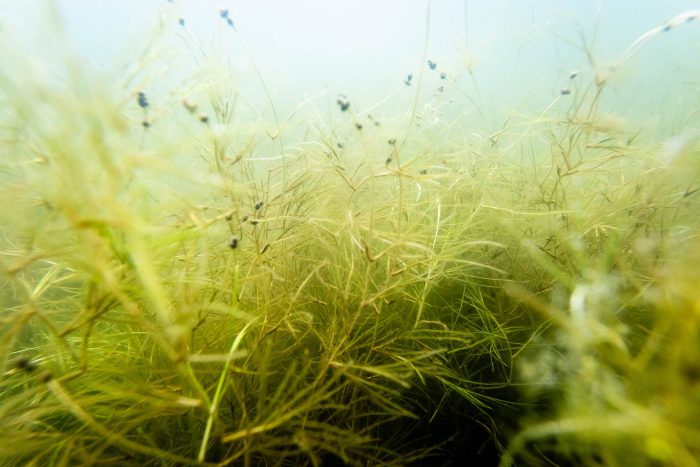Widgeon Grass
Ruppia maritima
Widgeon grass is an underwater grass with delicate, thread-like leaves that grow alternately along slender, branching stems. It ranges from slightly brackish upper and middle Chesapeake Bay rivers to the saltier lower Bay.

